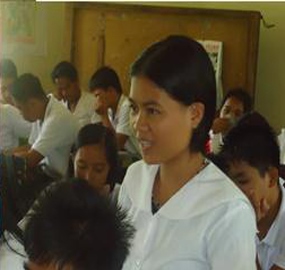
Sugpon, Ilocos Sur – Hyacinth Joy R. Singasing, 12, a Pantawid Pamilyang Pilipino Program beneficiary, walks for more than an hour along the rough road from her home in Brgy. Banga going to Sugpon National High School where she is in Grade 8.
“I come from a far-flung barangay and there would be times that I struggle in going to school because there is no available mode of transportation from our house,” Hyacinth said, in local dialect.
She added that she used to miss classes a lot during the rainy season as the muddy road makes it very hard to walk to school.
But that was before the Department of Social Welfare and Development (DSWD)-Field Office I partnered with the local government of Sugpon for the implementation of ‘Agsugpon Tayo’ Project.
‘Agsugpon Tayo’ is an Ilocano phrase which means teamwork, putting resources together, and partnering with other families.
The project aims to establish a pool of host or foster families who can provide substitute home and parental care forsix to 17 year-old children from upland areas in order for the kids to continue their schooling in the mainland.
Initally, there are 98 Pantawid Pamilya children beneficiaries of ‘Agsugpon Tayo’.
“I have never been absent from school ever since I stayed with my foster parents whose house is near my school,” Hyacinth said.
Gilbert Singasing, 30, father of Hyacinth, expressed that he is really grateful to the foster parents who accepted his daughter in their house.
“Though we are not there physically by her side to guide her, I am confident that she is in good hands,” he added.
DSWD-Field Office I Director Marcelo Nicomedes Castillo said that with the project, “dropping out and absences among Pantawid Pamilya children beneficiaries can be minimized if not totally prevented.”
Under Pantawid Pamilya, children beneficiaries must comply with the 85% attendance in school every month in order to continue to receive the monthly educational cash grant of P300.
DSWD Secretary Corazon Juliano-Soliman lauded this project saying that “children will become more motivated to go to school now that they no longer have to walk for hours to reach their schools.”
She urged more families to participate in this project to help poor students finish schooling and will have a bright future.
She also encourage other LGUs to adopt this strategy. ###


